|
|
From the History of the Jewish Movement |
Let My People Go.
|

|

|
| Fig. 2 | Fig. 2a |
Anatoly Altman
Attempted hijacking of an airplane from Leningrad 1970.
Fig. 2, 2a

|

|
| Fig. 3 | Fig. 3a |
Boris Azernikov was arrested in August 1971 and sentenced to 3.5 years in labor camps on charges of anti-Soviet agitation and propaganda. The real reason for his persecution seems to be that he acted as a witness in one of the political trials, where he refused to testify against his friends. After applying for emigration to Israel, he was arrested.

|
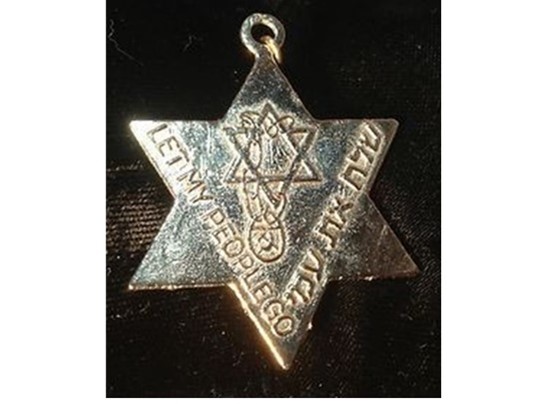
|
| Fig. 4 | Fig. 4a |
Yuri Brind
On January 13th 1972 he applied for an exit visa. On February 1st his apartment was searched. He was arrested and taken to a hospital for the mentally ill. On April 5th he was found fit to stand trial and charged with anti-Soviet fabrications and slander.
Fig. 4, 4a

|
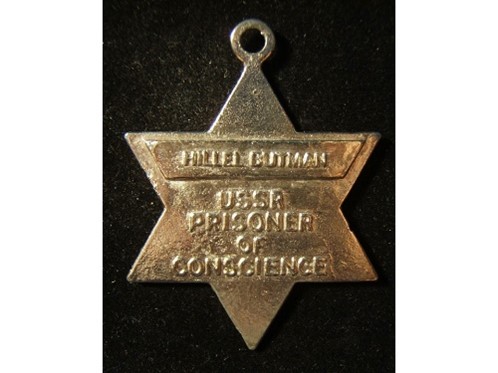
|
| Fig. 5 | Fig. 5a |
Hillel Butman
Participation in an illegal Zionist organization. The author are aware of a silver-colored (Fig. 5) and gold-colored (Fig. 5a) medallions with the Butman family name.

|
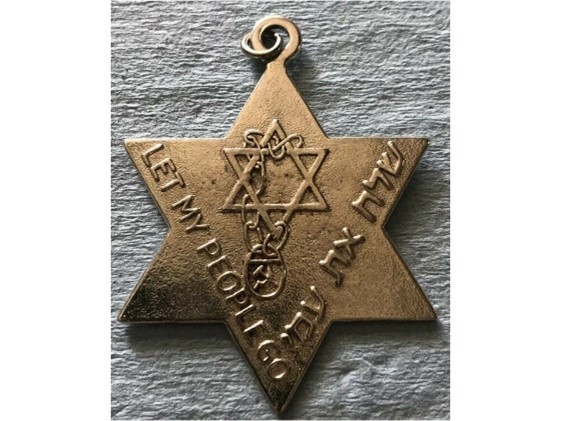
|
| Fig. 6 | Fig. 6a |
Shlomo Drezner
He was a member of the pro-Israel underground in Leningrad. Arrested in 1970 and sentenced to three years at a camp.
Fig. 6, 6a

|
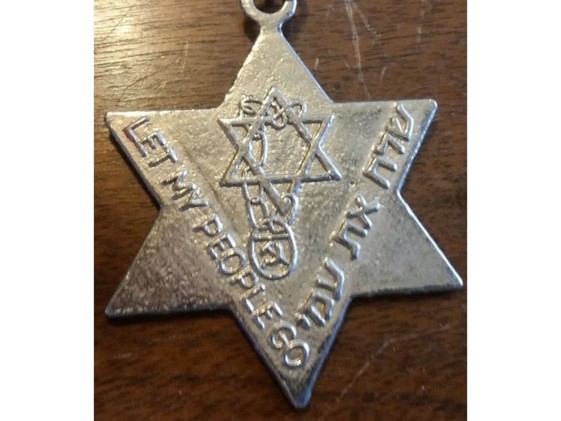
|
| Fig. 7 | Fig. 7a |
Mark Dymshits
Attempted hijacking of an airplane from Leningrad 1970. Death sentence commuted to 15 years in a camp.
Fig. 7, 7a

|
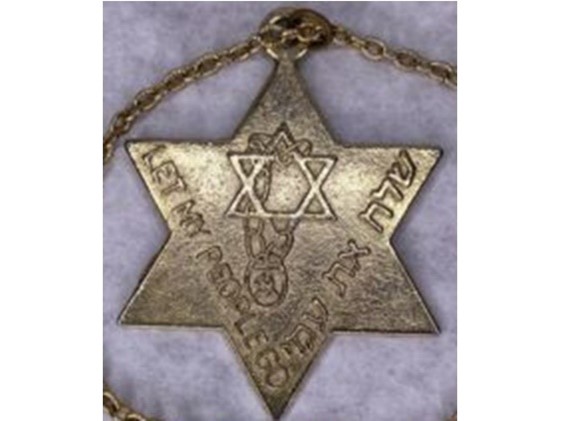
|
| Fig. 8 | Fig. 8a |
Anatoly Goldfeld
Participation in an illegal Zionist organization.
Fig. 8, 8a

|
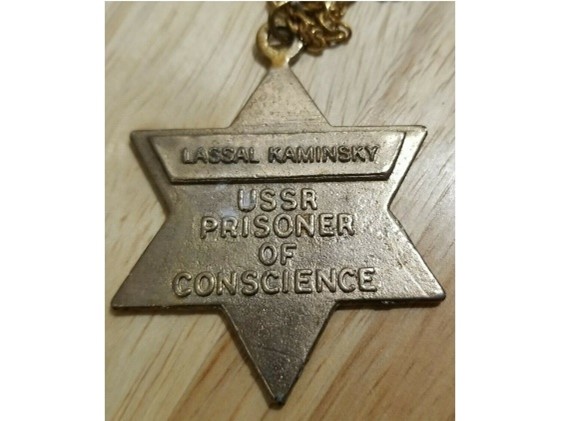
|
| Fig. 9 | Fig. 9a |
Lassalle Kaminsky
In 1968 he became a member of the underground Zionist organization in Leningrad, studied Hebrew, the history of the Jewish people and Israel. On June 15, 1970, he was arrested on charges of Zionist activity and a desire to immigrate to Israel. In 1971 (2nd Leningrad trial) he was sentenced to 5 years in prison, which he served in camps.
The author are aware of a silver-colored (Fig. 9) and gold-colored (Fig. 9a) medallions with the Kaminsky family
Fig. 9, 9a

|
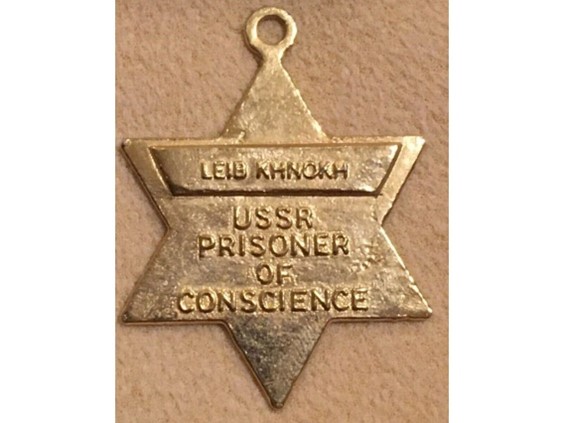
|
| Fig. 10 | Fig. 10a |
Leib Khnokh
Attempted hijacking of an airplane from Leningrad 1970.
The author are aware of a silver-colored (Fig. 10) and gold-colored (Fig. 10a) medallions with the Khnоkh family name.

|
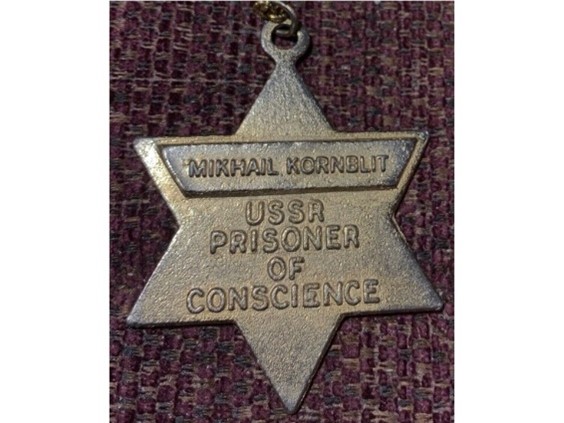
|
| Fig. 11 | Fig. 11a |
Mikhail Kornblit
Participation in an illegal Zionist organization.
The author are aware of a silver-colored (Fig. 11) and gold-colored (Fig. 11a) medallions with the Kornblit family name.

|
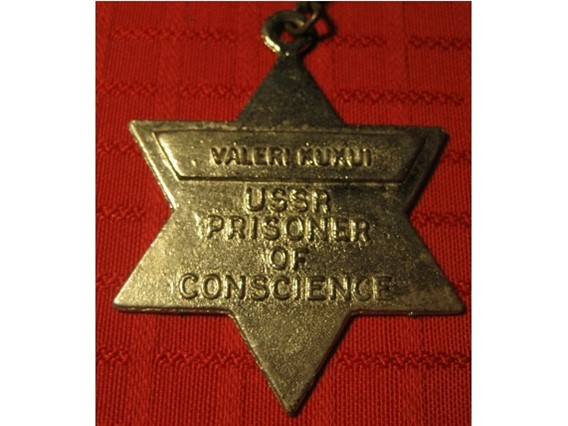
|
| Fig. 12 | Fig. 12a |
Valeri Kukui
He was a Jewish activist in Russia sentenced in 1971 to three years in a Soviet Labor Camp.
The author are aware of a silver-colored (Fig. 12) and gold-colored (Fig. 12a) medallions with the Kukui family name.

|
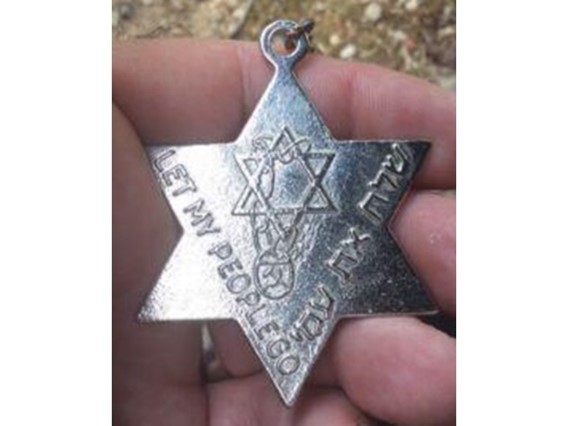
|
| Fig. 13 | Fig. 13a |
Eduard Kuznetsov
Attempted hijacking of an airplane from Leningrad 1970. Death sentence commuted to 15 years in a camp.
Fig. 13, 13a

|
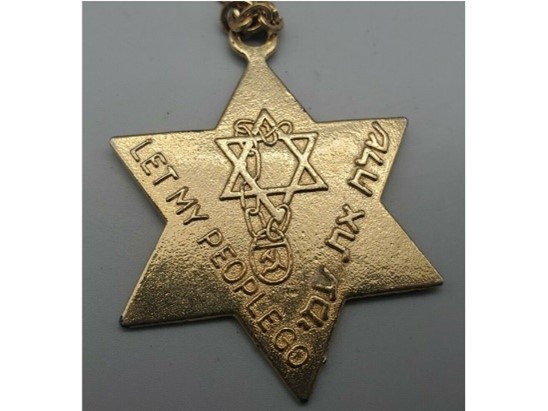
|
| Fig. 14 | Fig. 14a |
Semion Levit
He studied in Leningrad, where he joined an underground Zionist group to study Hebrew, Jewish history and culture, and the history of Zionism. Arrested in 1970, tried at the end of 1971 at the Kishinev trial. Sentenced to 2 years in a Mordovian camp, after 1.5 years he was released. In 1973 he immigrated to Israel.
Fig. 14, 14a

|
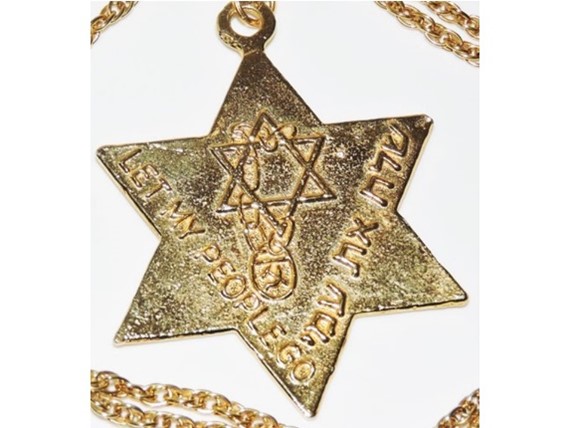
|
| Fig. 15 | Fig. 15a |
Vladimir Markman
He was a Jewish activist who applied for a visa to Israel/ He was sentenced in 1972 in Sverdlovsk to three years in a Soviet Labor Camp.
Fig. 15, 15a

|
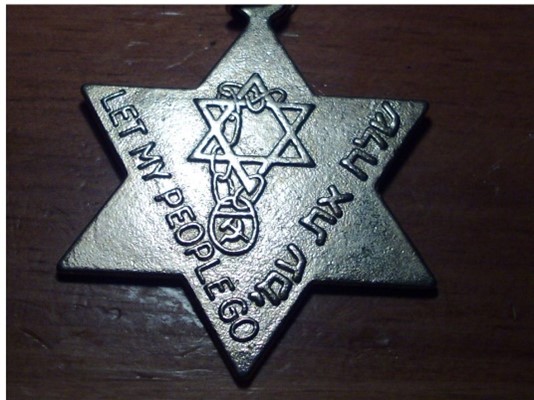
|
| Fig. 16 | Fig. 16a |
Iosif Mendelevich (on the medallion: Mendelovich)
Attempted hijacking of an airplane from Leningrad 1970.
Fig. 16, 16a

|
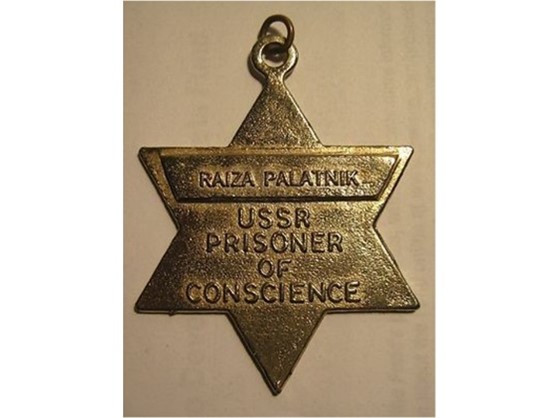
|
| Fig. 17 | Fig. 17a |
Rayza Palatnik
Arrested in 1970 on charges of Zionist activity, she was sentenced to 2 years in prison.
The author are aware of a silver-colored (Fig. 17) and gold-colored (Fig. 17a) medallions with the Palatnik family name.

|
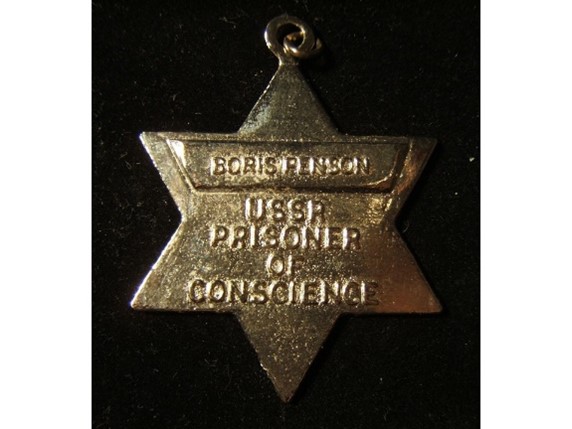
|
| Fig. 18 | Fig. 18a |
Boris Penson
Attempted hijacking of an airplane from Leningrad 1970.
The author are aware of a silver-colored (Fig. 18) and gold-colored (Fig. 18a) medallions with the Penson family name.

|
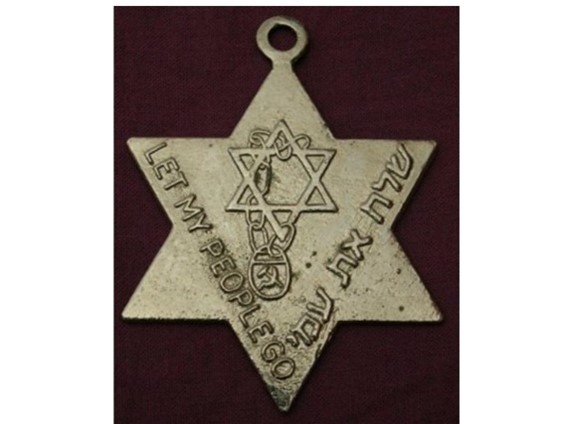
|
| Fig. 19 | Fig. 19a |
Yuri Vudka
Arrested in 1969 on charges of anti-state and Zionist activities and sentenced in 1970 to 7 years in strict regime camps.
Fig. 19, 19a

|
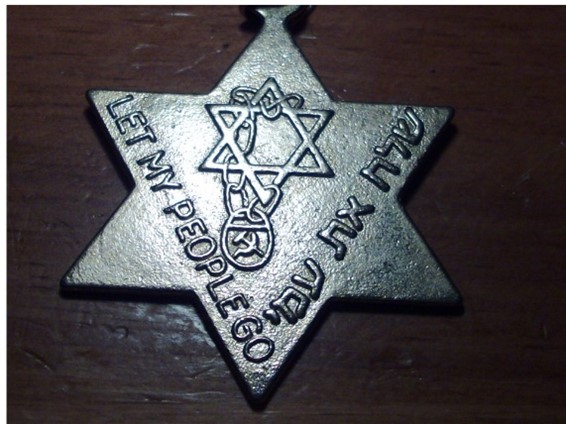
|
| Fig. 20 | Fig. 20a |
Israel (Izia) Zalmanson
Attempted hijacking of an airplane from Leningrad 1970.
The author are aware of a silver-colored (Fig. 20) and gold-colored (Fig. 20a) medallions with the Izia Zalmanson name.

|
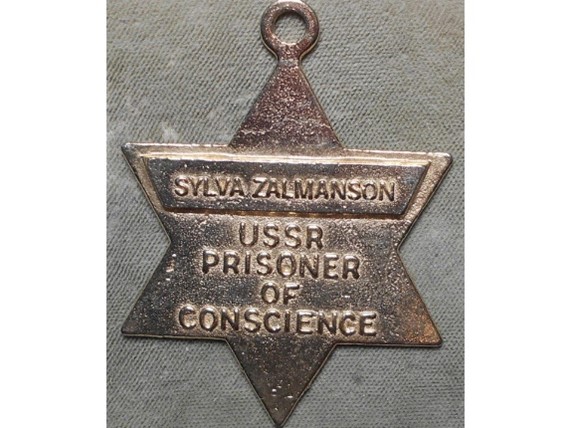
|
| Fig. 21 | Fig. 21a |
Sylva Zalmanson
Attempted hijacking of an airplane from Leningrad 1970. Sentenced to 10 years of imprisonment.
The author are aware of a silver-colored (Fig. 21) and gold-colored (Fig. 21a) medallions with the Silva Zalmanson name.

|
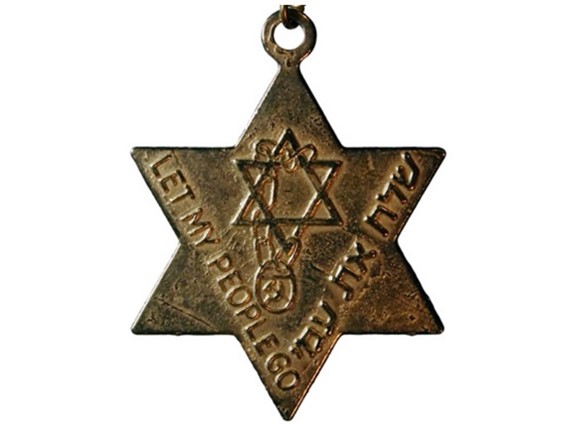
|
| Fig. 22 | Fig. 22a |
Wolf Zalmanson
Attempted hijacking of an airplane from Leningrad 1970.
Fig. 22, 22a
Literature:
1. Let My People Go (Coin Announced) “The SHEKEL” Volume IV, No. 3, p. 14, 1971.
2. Former Leningrad Mint Artist Creates Shcharansky "Prisoner of Conscience" Medal, “The SHEKEL” Volume XVI, No. 5, p. 28 - 29, 1983.
3. Jack H Fisher, Soviet Jewish Human Rights Activists Awarded US- Congressional Go1d Medals “The SHEKEL” Volume XXII No. 2, p. 25 - 27, 1989.
4. V. Bernshtam, “Medallions “Let my people go” Numismatics and Faleristics, №3, p. 24 – 26, 2017. В. Бернштам, “Медальоны “Отпусти народ мой” Нумизматика и Фалеристика, №3, с. 24 – 26, 2017.
5. M. Beizer, V. Bernshtam, Badges of the Center for Information on Soviet Jewry, Numismatics and Faleristics, №2, p. 37, 2021. (in Russian) М. Бейзер, В. Бернштам, Значки Центра информации о советском еврействе, Нумизматика и Фалеристика, №2, с. 37, 2021.
6. M. Beizer, V. Bernshtam, Badges of the organization "Struggle of students for Soviet Jews", Numismatics and Faleristics, №3, p. 32 – 34, 2021. (in Russian) М. Бейзер, В. Бернштам, Значки организации «Борьба студентов за советских евреев», Нумизматика и Фалеристика, №3, с. 32 – 34, 2021.
7. Teacher Guide 7th – 11th Grade “Are we Responsible for Others? The Movement to Free Soviet Jews”, National museum of American Jewish History, https://info.nmajh.org/uploadedFiles/Education/SovietJewry_TeacherGuide%20FNL%281%29.pdf
8. Involvement in the Soviet Jewry Movement A Personal Account, 1961-1978, Interviews with Louis Rosenblum by Daniel Rosenblum, http://www.clevelandjewishhistory.net/sj/interview.pdf
|
Home Page |
Database | Recollections |
Our Interview |
Prisoners of Zion |
From the History of the Jewish Movement |
What Was Written about Us by the Press |
Who Helped Us |
Our Photo Album |
Chronicle | In Memoriam |
Write to Us |